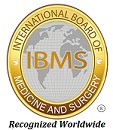It is a class B misdemeanor for a person, other than a licensed health care professional acting within that professional’s scope of practice, to tattoo, brand, subdermal implant, scarify, or pierce an individual who is under eighteen years of age unless the tattooing, branding, subdermal, scarifying, or piercing takes place in the presence of and with written consent of the individual’s parent or legal guardian. You must be 16 years old with parents to receive a piercing. And you must be 18 years old without parental consent. You must show a state issued ID, and guardians must also present an ID. Depending on the situation a birth certificate, and or court papers may be needed for our staff to complete the necessary paperwork.
Requirements for premises:
Following are the minimum requirements for construction, materials, and general condition of a body art establishment:
1. The operator of a new or extensively remodeled body art establishment shall submit a scale drawing and floor plan of the proposed establishment for a plan review by the department, as part of the license application process.
2. All walls, floors, ceilings, and procedure surfaces of a body art establishment shall be smooth, free of open holes or cracks,light-colored, washable, and in good repair. Walls,floors, and ceilings shall be maintained in a clean condition. All procedure surfaces, including client chairs and benches, shall be of such construction as to be easily cleaned and sanitized after each client. All body art establishments shall be completely separated by solid partitions or by walls extending from floor to ceiling, from any room used for human habitation, any food establishment or room where food is prepared, any hair salon, any retail sales, or any other such activity that may cause potential contamination of work surfaces, exposed equipment, or client procedure sites.
3. Effective measures shall be taken by the body art operator to protect against entrance into the establishment and against the breeding or presence on the premises of insects, vermin, and rodents. Insects, vermin, and rodents shall not be present in any part of the establishment, its appurtenances, or appertaining premises.
4. There shall be adequate floor space for the operator in each procedure room. Each establishment shall have procedure rooms that may be closed or screened, or both, from public view for clients requesting privacy.
5. The establishment shall be well-ventilated and provided with an artificial light source equivalent to at least twenty foot candles measured three feet off the floor, except that at least one hundred foot candles shall be provided at the level where the body art procedure is being performed, and where instruments and sharps are assembled.
No animals of any kind shall be allowed in a body art establishment except service animals used by persons with disabilities (e.g., seeing eye dogs). Fish aquariums shall be allowed in waiting rooms and nonprocedural areas.
7. A separate, readily accessible handsink with hot and cold running water, under pressure, preferably equipped with wrist-operated or foot-operated controls and supplied with liquid soap and disposable paper towels shall be readily accessible within the body art establishment. One handsink shall serve no more than three operators. In addition, there shall be a minimum of one lavatory, excluding service sinks, and one toilet in a body art establishment.
8. At least one covered waste receptacle shall be provided in each operator area and each toilet room. Receptacles in the operator area shall be emptied daily, and solid waste shall be removed from the premises at least weekly. All refuse containers shall be lidded, cleanable, and kept clean.
9. All instruments and supplies shall be stored in clean, dry, and covered containers.
10. Reusable cloth items shall be mechanically washed with detergent and chlorine bleach and dried after each use. The cloth items shall be stored in a dry, clean environment until used.













